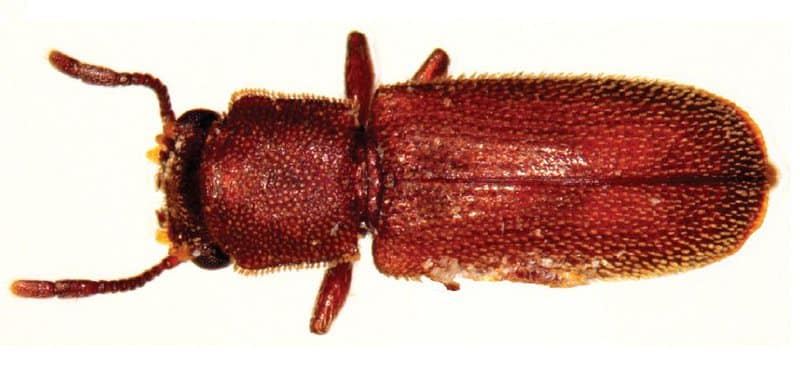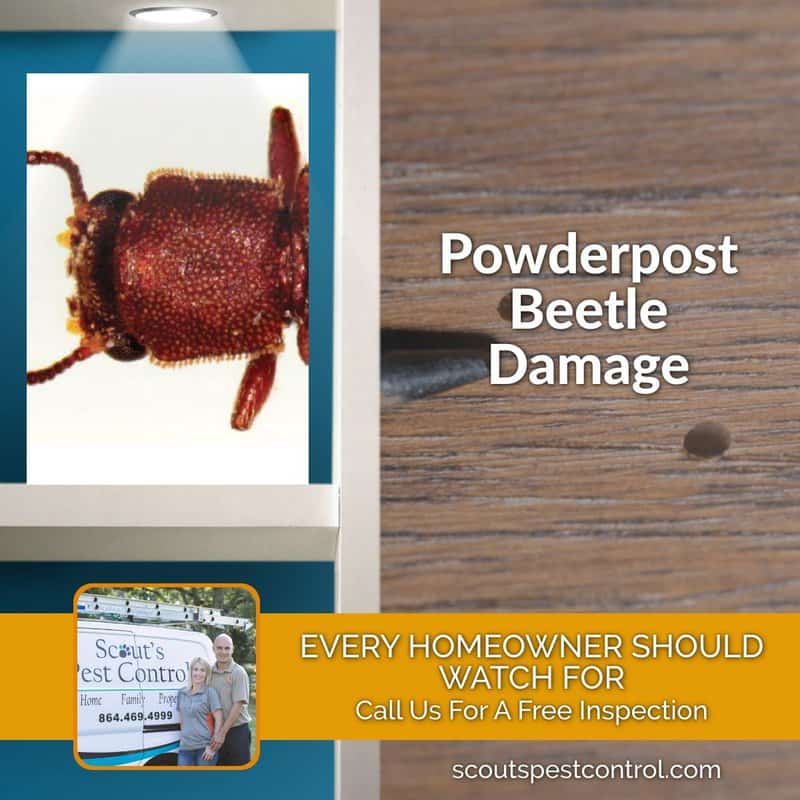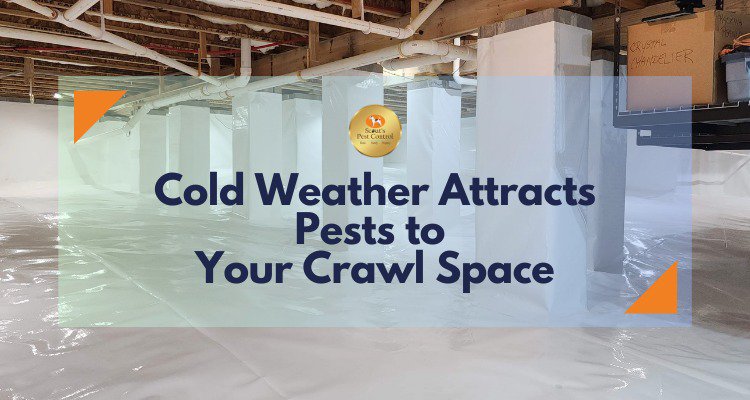Next only to termites in the amount of wood they damage every year across the United States are Powderpost Beetles, part of the insect subfamily Lyctinae and the super family Bostrichoidea. These creatures can, given sufficient time, bore enough tunnels through wooden objects as large as wooden walls and sofa sets to reduce them to a powdery dust — which ultimately gives them their name. While powderpost beetles will not bite or sting human beings, their wood-boring prowess makes them silver-medalists among US’s wood damaging insects.

The powderpost beetle is a given name that aptly describes this wood boring beetle. Given that it is fairly unusual to see these in South Carolina, the threat still remains fairly high and the damage these wood boring champions can cause is exponential. Here is a little more about these powderpost beetles and what you should know and look out for powderpost beetle damage signs in your home.
Powderpost Beetle Behavior
Powderpost beetles spend most of their time in the biological stage of infancy (‘larva’) before they mature into adults. It is the larvae who damage wood: breaking out of their eggs laid in wood, the white, C-shaped larvae bore through wood seeking to reach open air as they mature into adults. This is a patient venture typically lasting between two and five years (although in extreme cases, the time might span as many as three decades) that finally shows up as a small, round ‘exit hole’ in the wood. Adult beetles themselves cause little harm — their primary preoccupation is reproduction, which lasts a few days or at most a few weeks after which the adults die. Adults are typically between 1/16 and 1/4 inch (ca. 10 cm) long, with the color varying from reddish brown to black.
The Powderpost Larvae Are Hungry
Powderpost larvae don’t tunnel through wood just for the goal of reaching open air. They actually eat the wood for food and moisture. More precisely, as they tunnel through wood, the larvae devour the starch in the wood they excavate. The portion of the wood they tunnel through but don’t consume mixes up with larvae fecal matter and eventually shows up as pellets or sawdust particles (‘frass’) that fall off the exit hole. Exit holes are most often 1 mm — 3 mm in diameter.
Powderpost beetles actually consist of many sub-types, the three most common being Anobiid Powderpost Beetles, Lyctid Powderpost Beetles and Bostrichid Powderpost Beetles.
Deathwatch Beetles
Anobiid powderpost beetles – also known as ‘deathwatch beetles’– attack both hard woods (oak, walnut, bamboo) and soft woods (pine). They can re-infest wood indoors — which means an adult anobiid female can retrace her steps into a previously-bored tunnel inside wood to lay eggs. Anobiid powderpost beetles need a lot of moisture in the air, and are therefore found most often in the Pacific Northwest and in coastal areas. Unlike other powderpost beetles, the frass of anobiids glues up, eventually showing up as small and hard fecal pellets.
Lyctid powderpost beetles — also known as ‘true powderpost beetles’ — are generally found in large-pored hardwoods such as oak, myrtle, ash and mahogany. Their exit holes are small and the frass flour-like. Lyctid powderpost beetles most commonly infest wooden furniture, flooring, paneling, door-frames and window-frames. Since lyctids do not attack softwoods, structural components (beams, joists) made of lumber are not at risk of a lyctid infestation.
Millions of Dollars Of Damage
Powderpost beetles cause damage worth hundreds of millions of dollars across the US every year. Homeowners should keep an eye open for small holes (typically 1 mm to 3 mm in diameter) in the wooden members and furniture in the house. These are likely exit holes created by powderpost larvae, in which case frass too will be in view in the vicinity.
Homeowners Should Know The Signs Of Powderpost Beetle Damage

If a homeowner sees pellets or sawdust on or beneath wood and small holes in the wood surface, these likely are signs of a powderpost beetle infestation, which could have been active for anywhere between three months and five years. Because the infestation does not become evident for a long time, serious damage can occur before an infestation is discovered in areas that are hidden, such as crawl spaces. This is just one extra reason why you should have your crawl space encapsulated to negate those survival conditions needed.
Protect your wood in your home and that also means your furniture.
Powderpost beetles usually make their way into your home via infected wood. Homeowners should therefore inspect wood prior to purchase and ensure the wood is properly kiln-dried or air-dried. Inside the house, there must be no sources of excess moisture — moisture is an open invitation to powderpost beetles. As a homeowner, you must therefore seal wooden surfaces and encapsulate your crawl space.
If you suspect that you have an infestation of powderpost beetles in your home, you should immediately call in scouts pest control in order to ascertain that you do indeed have a wood boring infestation. Remember these beetles are just as serious as termites and the damage is often done before you notice. They may go unseen in your crawlspace and then you may only see the signs in your home as they attack your furniture. Call us now to book a free crawl space inspection or if you see signs of powderpost beetle damage inside your home.





